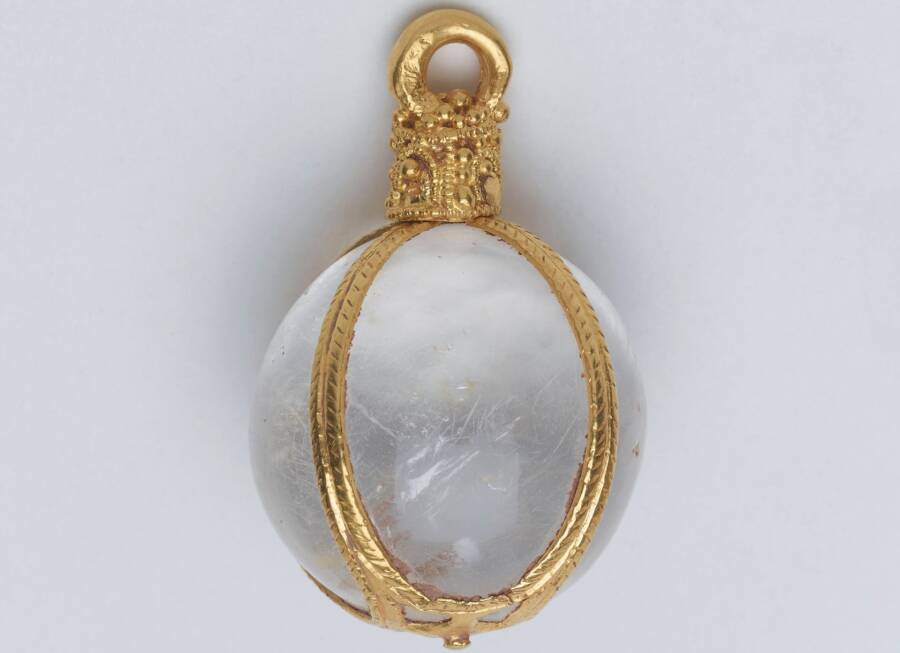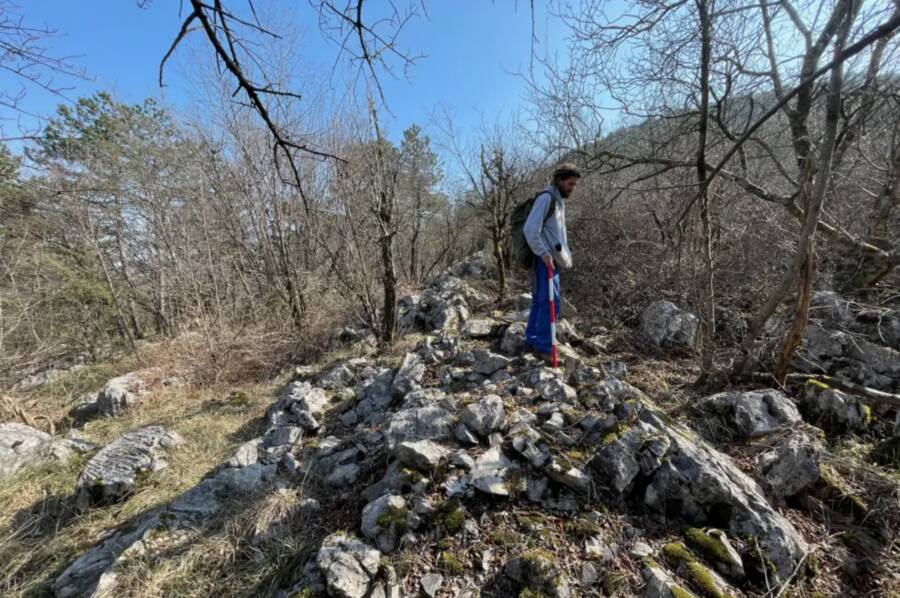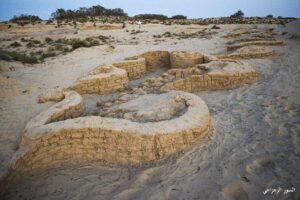Viking Fortune Turns to Legal Fiasco: Treasure Finders Headed to Prison
There’s also the location of the treasure to consider. The fact that they were found near Leominster suggests that part of the Viking army, who were believed to have used Ceolwulf II as a political puppet, was in the area after their defeat in Wiltshire in 878.
Combined with another Anglo-Saxon treasure haul found in the same area by different metal detectorists, these finds are more than just relics.
“The two hoards together are fundamentally changing our view of history,” said Gareth Williams, an Anglo-Saxon and Vikings specialist at the British Museum. “These coins are encouraging us to go back to the written sources and re-examine them.”
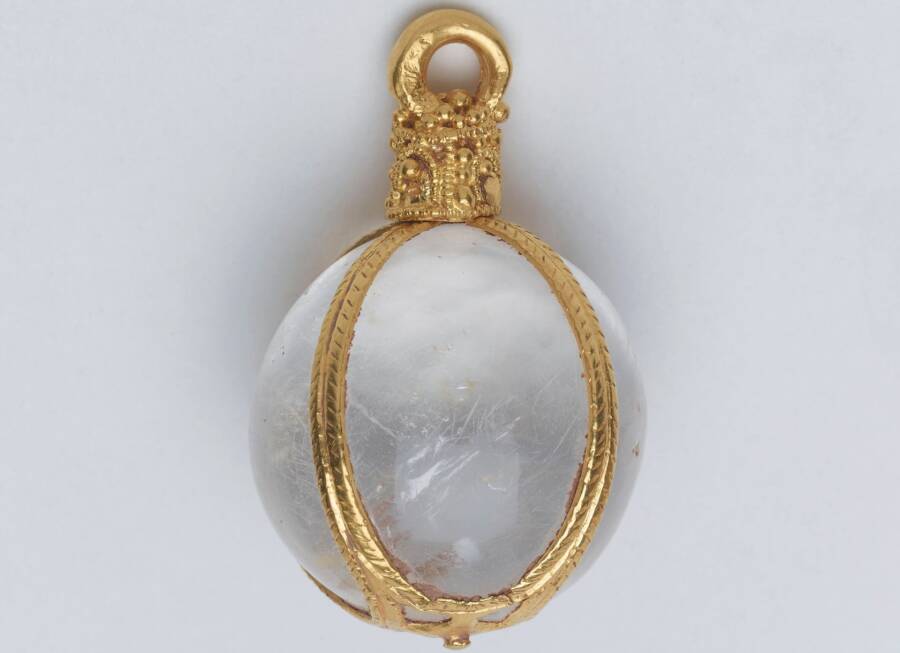
British Museum/PAThe crystal ball pendant, the oldest item in the treasure haul, dates back to the 5th or 6th century.
Soon after Powell’s and Davies’ discovery, word spread of their priceless haul. The treasure hunters received their first visit from local authorities about a month after their discovery, when Herefordshire Finds Liaison Officer Peter Reavill contacted Powell and Davies, and gently asked if they had anything to tell him.
Powell initially denied it but eventually gave up the gold jewelry and an ingot. However, the two denied finding anything else. When Paul Wells, the first expert Powell and Davies had visited to value their loot, showed inquiring police the five coins from the hoard that had been stitched into his magnifying glass case, the jig was finally up.
“I knew it would come to this,” Wells said as he was handcuffed. The two treasure hunters were both found guilty of theft and — along with Wells and another dealer who failed to report the haul to authorities — conspiracy to convert or conceal criminal property.
Powell was jailed for 10 years, and Davies was jailed for eight-and-a-half years. Meanwhile, a coin seller named Simon Wicks was jailed for five years and Wells is due to receive his sentence in December.
“These men would be rich by now if they had done things by the book,” said Williams. “They have chosen not to and in doing so have destroyed an important part of our history. It’s difficult to feel any sympathy for them at all; they have been greedy and selfish and the nation is the loser.”
Police are still looking for the rest of the treasure.
Next, read about 557 rare coins from the Black Death era that were dug up by amateur metal detectorists and check out the $2.4 million-worth of gold bars found inside a tank that was purchased on eBay.
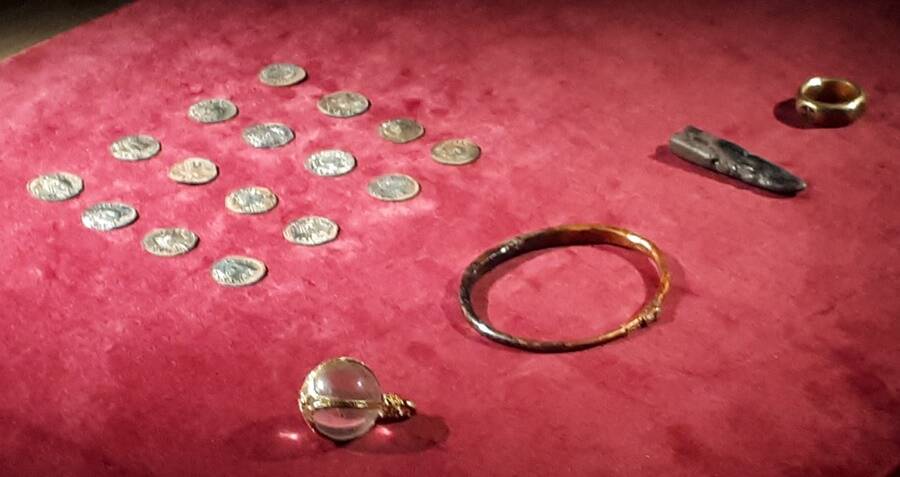
Auto Amazon Links: No products found.
